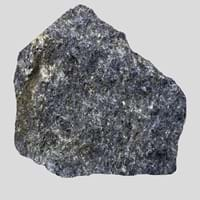Definition
Laterite rock is a type of Sedimentary rock which is rich in iron and aluminium, formed in hot and wet tropical areas
Blueschist is a metamorphic rock which is generally blue in color and is formed under conditions of high pressure and low temperature
Discoverer
Francis Buchanan-Hamilton
Edgar Bailey
Etymology
From Latin later brick, tile + -ite1
From French schiste, Greek skhistos i.e. split
Class
Sedimentary Rocks
Metamorphic Rocks
Sub-Class
Durable Rock, Soft Rock
Durable Rock, Medium Hardness Rock
Group
Not Applicable
Not Applicable
Other Categories
Fine Grained Rock, Opaque Rock
Fine Grained Rock, Medium Grained Rock, Opaque Rock
Texture
Earthy, Massive, Porphyritic
Foliated
Color
Brown, Buff, Red
Blue, Bluish - Grey, Purple, Shades of Blue
Durability
Durable
Durable
Appearance
Rough and Banded
Dull and Banded
Interior Uses
Decorative Aggregates, Flooring, Interior Decoration
Floor Tiles, Flooring, Homes, Hotels, Kitchens
Exterior Uses
As Building Stone, As Facing Stone, Garden Decoration
Garden Decoration, Office Buildings
Other Architectural Uses
Curbing
Not Yet Used
Construction Industry
Cobblestones, for Road Aggregate, Landscaping, Roadstone
As Dimension Stone, Cobblestones, Rail Track Ballast, Roadstone
Medical Industry
Not Yet Used
Not Yet Used
Antiquity Uses
Artifacts, Monuments, Sculpture
Artifacts, Monuments, Sculpture
Commercial Uses
An Oil and Gas Reservoir, Source of bauxite, Used in aquariums
Cemetery Markers, Commemorative Tablets, Creating Artwork, Curling, Tombstones
Types
Not Available
Not Available
Features
Is one of the oldest rock, Very fine grained rock
Has High structural resistance against erosion and climate, Very fine grained rock
Archaeological Significance
Famous Monuments
Data Not Available
Data Not Available
Famous Sculptures
Data Not Available
Data Not Available
Formation
Laterite is a type of sedimentary rock which is generally a reddish weathering product of basalt.
Blueschist forms due to the metamorphism of basalt and other rocks with similar composition at high pressures and low temperatures and approximately corresponding to a depth of 15 to 30 kilometers and 200 to 500 °C.
Mineral Content
Aluminum Oxides, Biotite, Hematite, Hornblade, Iron Oxides, Manganese Oxides, Micas, Muscovite or Illite, Plagioclase, Pyroxene
Albite, Chlorite, Epidote, Garnet, Glaucophane, Lawsonite, Muscovite or Illite, Quartz
Compound Content
Aluminium Oxide, CaO, Iron(III) Oxide, FeO, Potassium Oxide, MgO, MnO, Sodium Oxide, Phosphorus Pentoxide, Silicon Dioxide, Titanium Dioxide
Aluminium Oxide, CaO, Iron(III) Oxide, FeO, Potassium Oxide, MgO, MnO, Sodium Oxide, Phosphorus Pentoxide, Silicon Dioxide, Titanium Dioxide
Types of Metamorphism
Not Applicable
Not Applicable
Types of Weathering
Biological Weathering, Chemical Weathering
Mechanical Weathering
Types of Erosion
Chemical Erosion, Water Erosion, Wind Erosion
Chemical Erosion, Coastal Erosion, Water Erosion, Wind Erosion
Grain Size
Fine Grained
Fine to Medium Grained
Fracture
Conchoidal
Conchoidal
Streak
White
White to Grey
Porosity
Highly Porous
Highly Porous
Cleavage
Not Applicable
Slaty
Toughness
Not Available
1.5
Specific Gravity
Not Available
3-3.2
Transparency
Opaque
Opaque
Density
Not Available
2.8-2.9 g/cm3
Resistance
Heat Resistant, Pressure Resistant
Impact Resistant, Pressure Resistant
Deposits in Eastern Continents
Africa
East Africa, Western Africa
Egypt, Ethiopia, South Africa
Europe
England, Romania, Scotland
France, Greece, Iceland
Others
Not Yet Found
Not Yet Found
Deposits in Western Continents
North America
Canada, USA
USA
South America
Not Yet Found
Not Yet Found
Deposits in Oceania Continent
Australia
Central Australia, Western Australia
New Zealand
All about Laterite and Blueschist Properties
Know all about Laterite and Blueschist properties here. All properties of rocks are important as they define the type of rock and its application. Laterite belongs to Sedimentary Rocks while Blueschist belongs to Metamorphic Rocks.Texture of Laterite is Earthy, Massive, Porphyritic whereas that of Blueschist is Foliated. Laterite appears Rough and Banded and Blueschist appears Dull and Banded. The luster of Laterite and Blueschist is dull. Laterite is available in brown, buff, red colors whereas Blueschist is available in blue, bluish - grey, purple, shades of blue colors. The commercial uses of Laterite are an oil and gas reservoir, source of bauxite, used in aquariums and that of Blueschist are cemetery markers, commemorative tablets, creating artwork, curling, tombstones.










